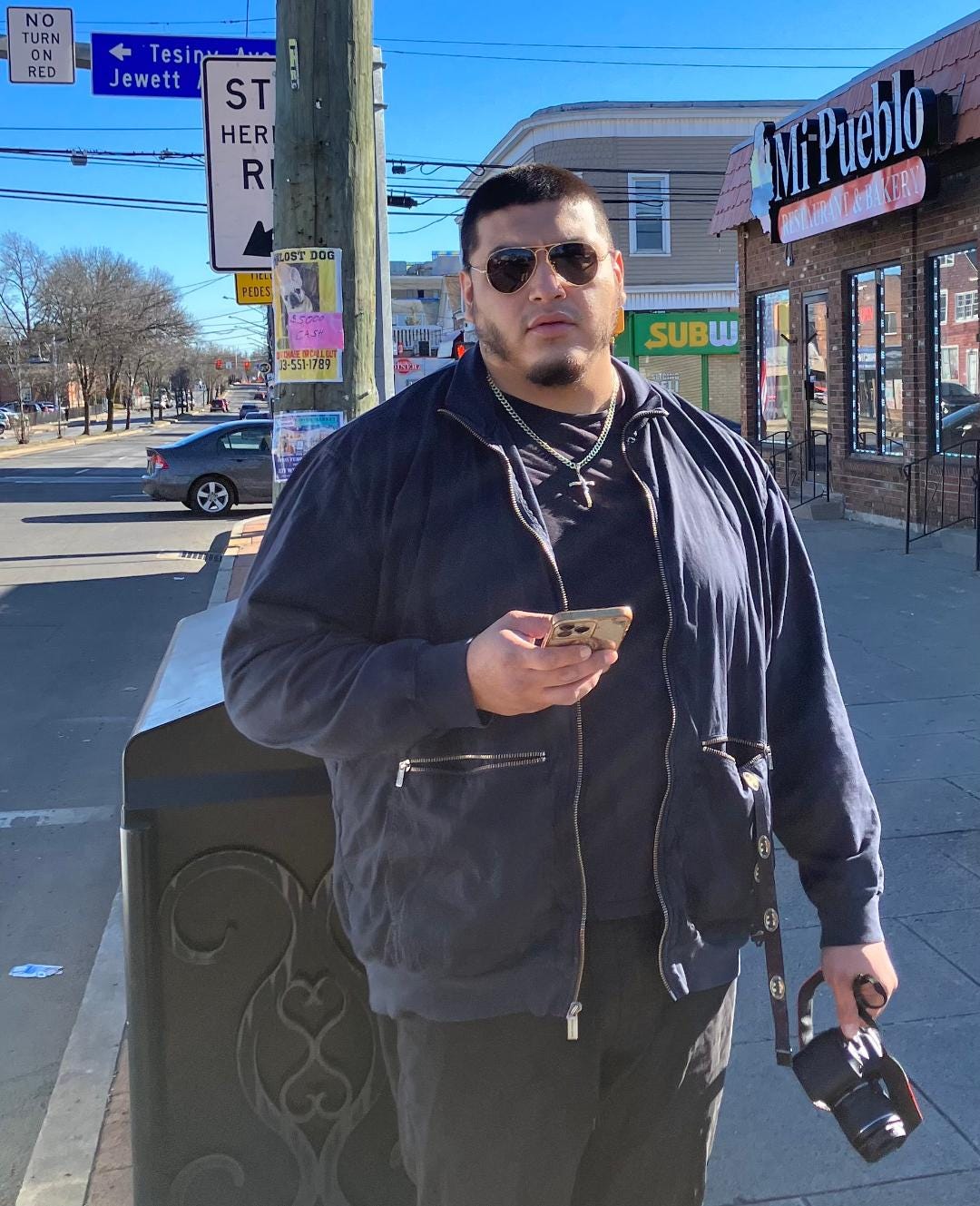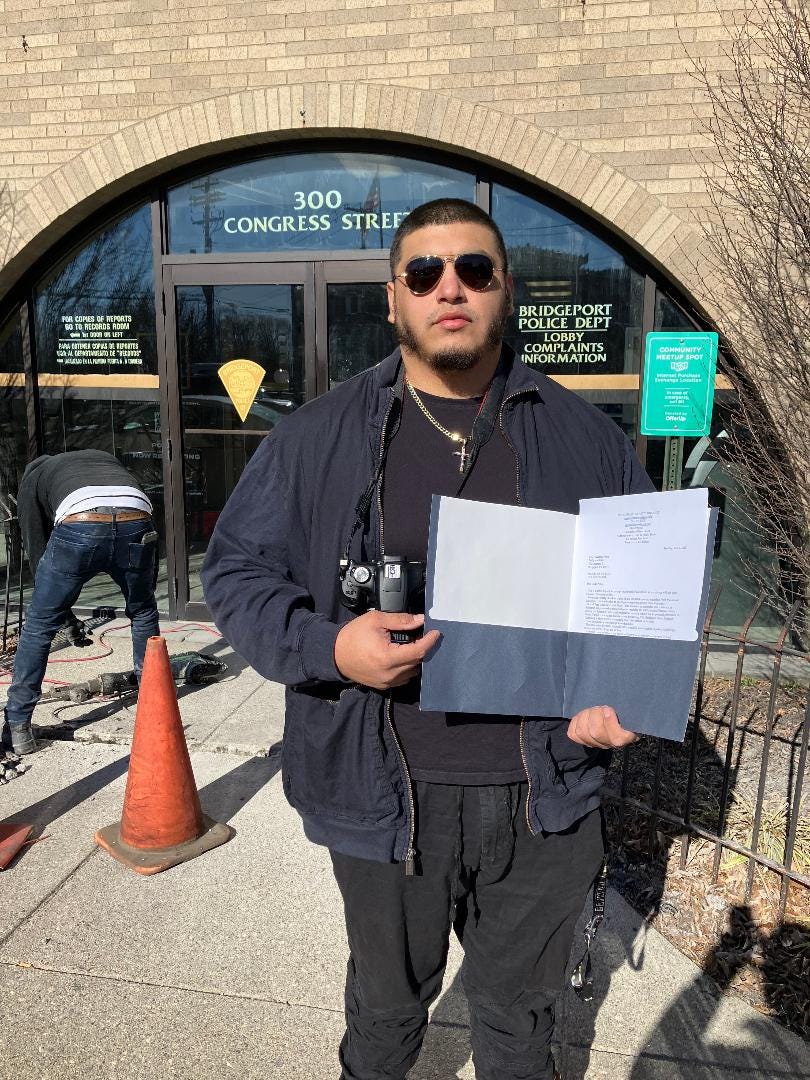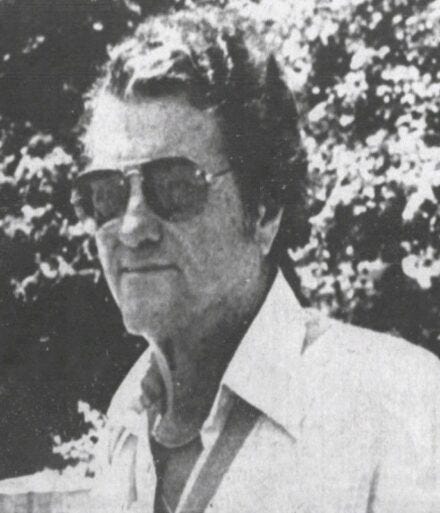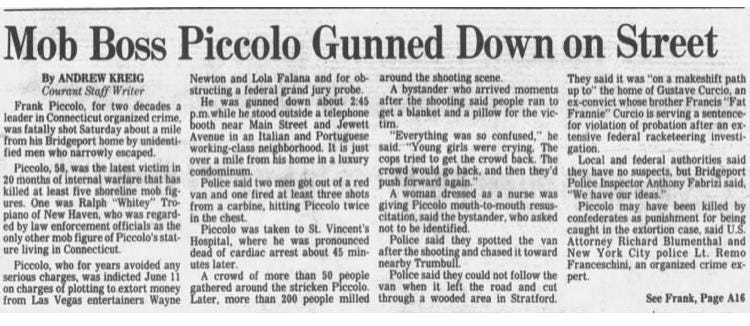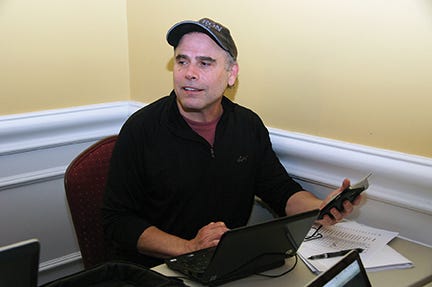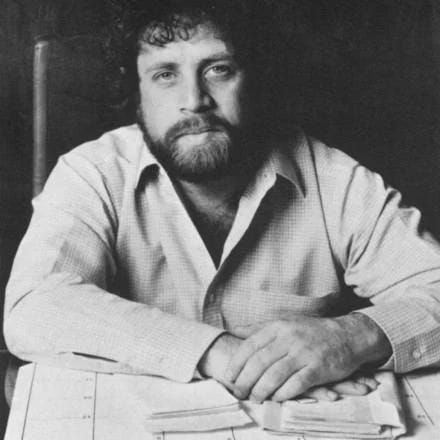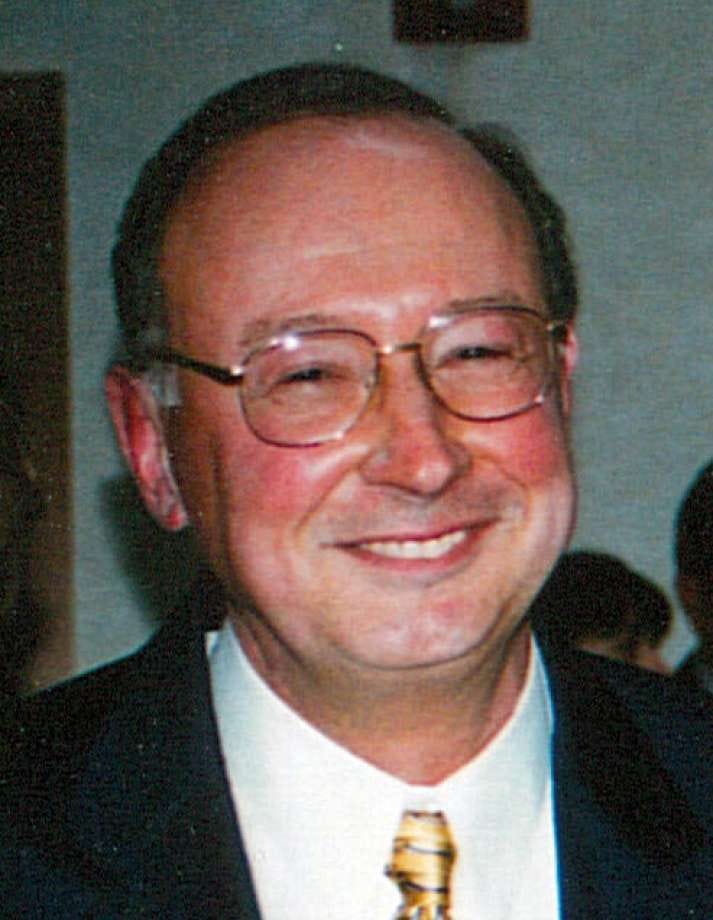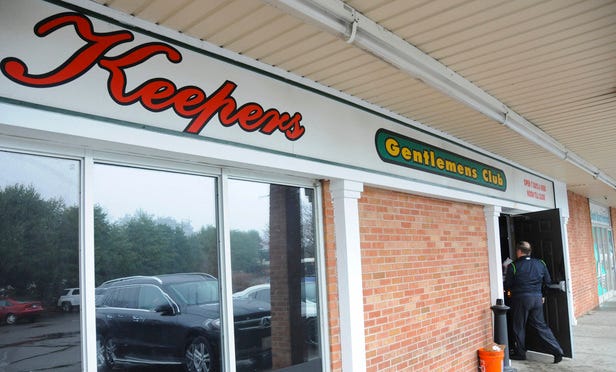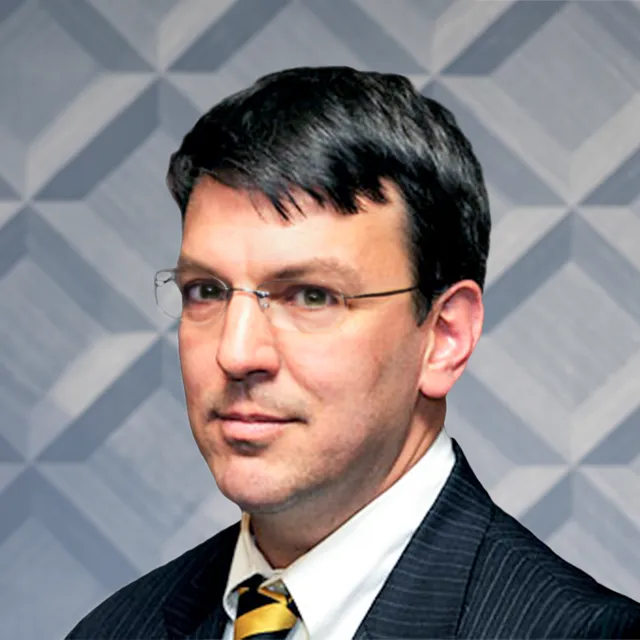Guest Post: A PERSONAL JOURNEY AND INVESTIGATION INTO THE LOCAL MOB AND MY HERITAGE
By ERICK ALEJANDRO CUATZO: Frank Piccolo And Gus Curcio -- Then And Now
Erick Cuatzo at Mob Hit Scene in Bridgeport
By ERICK ALEJANDRO CUATZO
Editor’s Note: The author, a graduate of the University of New Haven, wrote this story for an investigative reporting class. He also is an accomplished photographer and videographer with a wide range of digital editing and production skills. The story originally was published in the university’s Horseshoe Magazine in 2024.
BRIDGEPORT – My friends call me Chavo.
When the Henry Hill character played by Ray Liotta in Goodfellas says, “For as long as I could remember I’ve always wanted to be a gangster,” I can relate to that.
I moved to Bridgeport from my native Mexico as a youngster in elementary school. I’m proud of where I’m from, even though I realize gangsters have taken over various parts of the government from top to bottom now and then. We are hard-working people and we fight hard. I’m proud of that especially.
The deep duality of man, of good and evil, intrigues me – but, not enough to join the gangs I encountered at Central High School. I could have joined the Latin Kings, Bloods or Crips: Students associated with the gangs, but it was very low key with the intention of not being visible to the regular people.
Instead, I played football as a defensive lineman and wrestled. In those endeavors I didn’t have to look over my shoulder. The odds of causing someone else’s funeral or my own were much lower.
I’ve watched many mafia films and shows including the full Sopranos series and Narcos. I wanted to be a part of that world, somehow.
Now, in what seems like a relatively safe and enlightening way, I am, from the outside looking in.
Hand-Delivery of Public Records Request: No Records Produced
I asked my professor about mob incidents in Bridgeport. We decided to focus on a 1981 daytime assassination at a pay phone on Main Street in my city. We went to the scene and took photos. I presented public records requests in person to police and interviewed national and local experts on organized crime, as well as lawyers and other sources.
On Sept. 19, 1981, Frank Piccolo, 58, was considered the most powerful mobster in Connecticut, reporting to New York City bosses. He was a capo [leader] in the Gambino crime family. Piccolo also was known as The Cigar, Frankie Cigars, Frank Lanza and Bobby Brooks.
Frank Piccolo
Piccolo had a few problems. He had been heard on federal wiretaps talking to an enforcer about mob business. A transcript made it into a court record. And he was awaiting a federal trial after being accused of trying to extort money from Las Vegas entertainers Wayne Newton and Lola Falana. He was attracting too much attention to mob involvement in Hollywood and Las Vegas.
That problem ended when he took multiple shots to the chest on a Saturday afternoon while talking at a pay phone on Main Street by Jewett Avenue. A bearded man was among the suspects in the slaying.
Lennie Grimaldi
“Word was Gambino boss Paul Castellano leveraged the rival Genovese family to take out Piccolo,” said reporter Lennie Grimaldi, who began covering the Bridgeport crime scene in the 1970s.
Grimaldi, whose books include Only in Bridgeport and Chased: Alone, Black and Undercover, spoke to our class and also was very helpful answering additional questions. He attended Piccolo’s wake and maintains a decades-long relationship with multi-faceted businessman Gus Curcio, the man once accused of killing Piccolo and who later served federal time for extortion.
Gus Curcio
After interviewing Curcio many times, Grimaldi asked Curcio what was in it for him to be featured in the local paper, then The Bridgeport Post.
Grimaldi recounted Curcio’s response for class: “You scare people. People are intimidated by you … [and] … My dating life was never better.”
When asked whether he killed Piccolo, Curcio “just laughs and ducks,” Grimaldi said.
Curcio actually was arrested and charged on a state warrant with Piccolo’s murder three days after the shooting, but he never went to trial.
“He walked into police headquarters clean shaven,” Grimaldi recalled. Witnesses had described one of the shooters as a likeness to Curcio who wore a beard, Grimaldi said.
United Press International reported police found five guns at Curcio’s home in Stratford, none of them used in the Piccolo killing.
“Somebody sure did a good job of framing me,” Curcio told reporters after posting bond.
In 1981 Connecticut’s Constitution required a grand jury indictment before someone could be prosecuted for a crime punishable by death or life imprisonment. That changed the following year.
Under the system operating for the Curcio case, prosecutors did not present evidence in the jury room. The grand jury foreperson controlled the proceedings.
Grimaldi said the beardless Curcio made his way into the grand jury and confronted the lead investigator, Bridgeport Police Inspector Anthony Fabrizzi, who was considered tough and a steely force on the streets.
“Curcio did enough to charm them [the grand jury],” Grimaldi said. “Did he have some friends on there that we didn’t know about? … He just said, ‘I took on Fabrizzi, I took him on.’ ”
Frank Maco
Then Asst. State’s Attorney Frank Maco, who represented the state in the Piccolo murder, said he “had no control of the questioning or any other activity that took place in those rooms, strange as that may seem. Instead, witnesses entered the grand jury room with a written synopsis of what they had to offer which was presented to the foreperson who would lead the questioning.”
Two grand juries refused to indict Curcio. The grand juries were charged with determining whether there was probable cause to indict Curcio. Maco, who retired as Litchfield State’s Attorney, had persuaded a judge to empanel a second grand jury.
“Mystery and speculation ensued as to what took place in those jury rooms,” Maco said. “But, at times you get a runaway jury that does not fulfill their duty.”
On that note, the state’s case ended.
Bridgeport Police Chief Roderick Porter
Bridgeport Police Chief Roderick Porter was asked by hand-delivered letter to officer Janice Vizzo on Feb. 6, 2024 to provide any and all documents regarding Frank Piccolo and Gus Curcio and specifically the witness list developed by Fabrizzi and prosecutors. A follow-up request was made by fax on March 26. Municipal and state agencies must produce public records promptly, according to state law. Violations can result in a fine and / or mandatory training on the public’s right to know. No records were produced.
Curcio made the news again in 2023 after his lawyers settled a case with strippers who claimed Curcio owed them $200,000 in stolen wages at Keepers in Milford.
Keepers
Attorney Ken Krayeske, who represented the plaintiffs, said his exhaustive research at entities including the state Liquor Control Commission revealed Curcio provided seed money for the club and his name was on the initial incorporation document.
“None of [my clients] have college degrees,” Krayeske said. “All of them have been sexually abused at some point.”
Attorney Ken Krayeske
The Connecticut Post reported in 2023 on negotiations between Curcio and Krayeske on the settlement. The lawyer representing Keepers, Steven Bellis, told The Connecticut Post he was not involved in the settlement negotiations.
There are more downsides to this gangster life than I realized. I’m glad to be going down the reporter road. There are lots of angles and lots of follow-ups and lots of exciting people to meet.
Editor’s Footnote: A driver for Piccolo told me he would chauffer the capo to card games in Middlesex County where security was provided by local police. AT.


